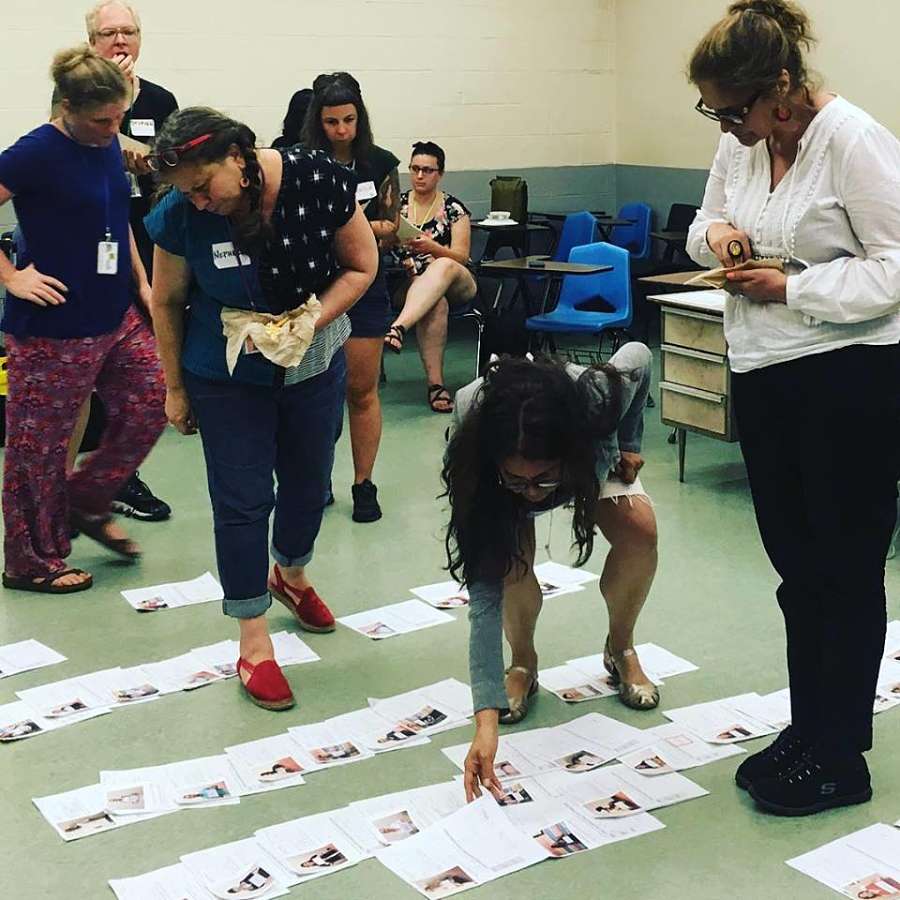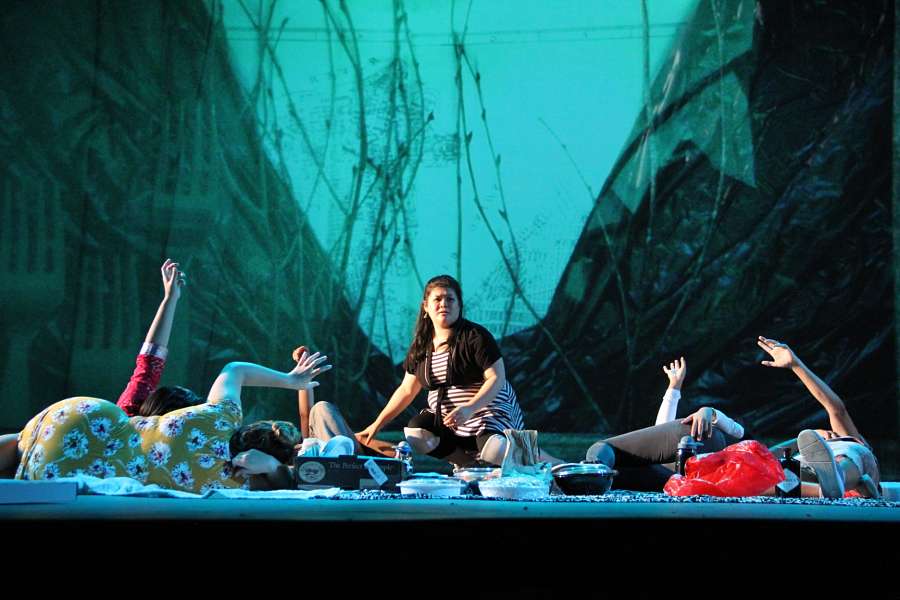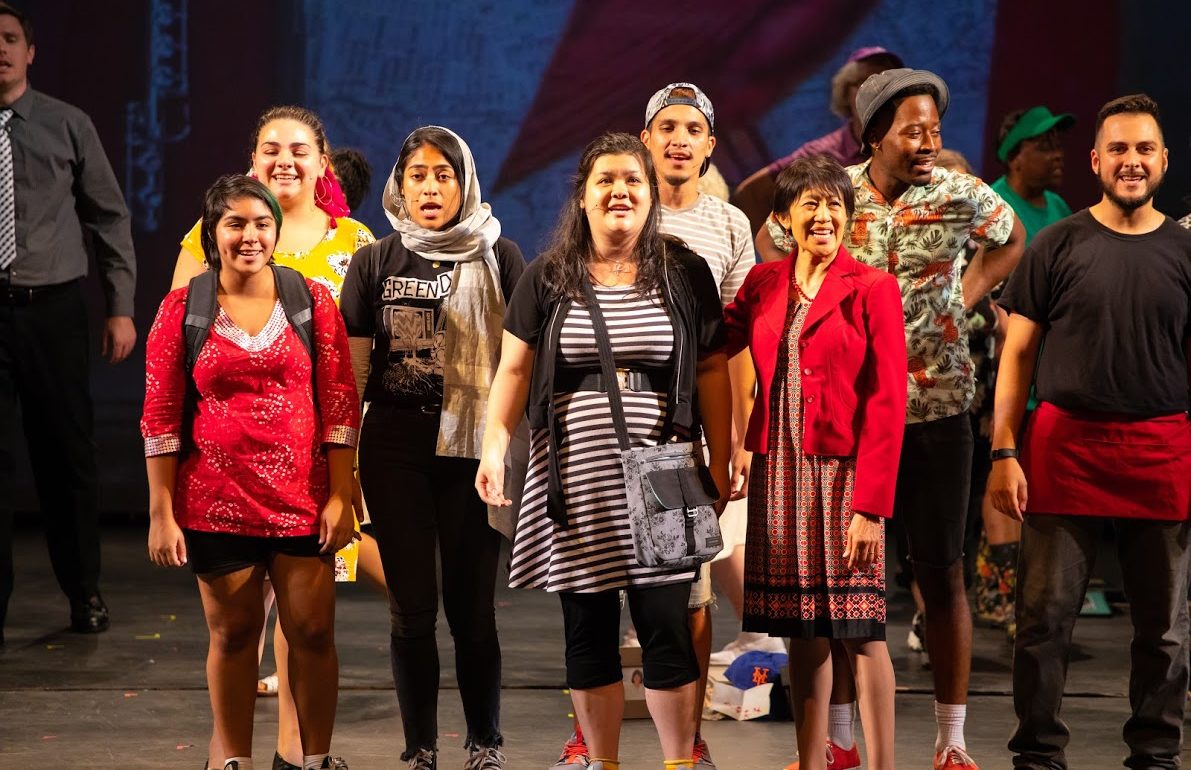One balmy July evening inside a Romanesque 19th-century building on a bustling urban boulevard, I joined a few dozen folks filling chairs in an art gallery to hold forth on a subject we aren’t asked about all that much: our home borough, Queens, in all its sparkling, mundane, dizzyingly diverse particulars.
“You can wear colors in Queens,” said one sixtysomething African American woman. “In Manhattan everyone wears black.”
“Queens isn’t trying to be anything but itself,” said one young white woman, a proud native of Elmhurst, one of dozens of neighborhoods spread in a crazy quilt around the freeways and parks and schools and shopping malls in the nation’s most diverse urban area. I chimed in to praise the region’s wildly disparate culinary options, from tacos al pastor to Uzbek tandir.
Others addressed some of the New York City borough’s challenges: transportation, housing, racial and linguistic divides. But the tone among this self-selecting circle of volunteer voices ranged from celebratory to contemplative. Not that this was a free-for-all: The conversation was gently guided and playfully prodded by a handful of non-Queens residents, including actor Peter Howard, composer Emily Gardner Xu Hall, director Juliette Carrillo, costumer Nephelie Andonyadis, and, perhaps most important, playwright Cusi Cram, who sat taking notes. These were artists with Cornerstone Theater Company, and they were there to make a play about Queens, with the collaboration and input, and even the active stage participation, of Queens residents.
The story circle is a regular practice in the theatre company’s community-based play-development process. But two things set this apart from Cornerstone business as usual: For one, this was the first time company had done its summer training institute, which teaches participants its community-engaged aesthetic by mounting an original production, outside its longtime home base of California. Secondly, and even more dauntingly: While Cornerstone’s show development, both for its season productions and its institute efforts, typically involves playwrights and other creators working with community members as early as a year before the eventual performance date, Cram and her colleagues would be putting a new, as yet unwritten play on a stage at Queens College in a matter of weeks.
“Try reading a play that you’ve written in three days, knowing it’s not finished, to 60 people,” Cram told me a few weeks later, in the midst of rehearsals, about her first experience presenting the play to the company. “I was kind of like, I can’t believe I’m doing this. It felt like a very strange dream. Here we go!”
That July gathering wasn’t her first story circle on the project—she’d done one in April—and she had clearly already been mulling some of the play’s topics and themes for a while. For one, the intriguing assemblage boxes of Joseph Cornell, a longtime Flushing resident, were a touchstone. The eventual play’s title, The Cardinal, has meaning for her too.
“The cardinal is an interesting bird in that it stays in one place all year round,” Cram said, making it an ideal symbol for what would become a “kind of a play about home and what home means. And cardinals tend to appear at important moments in my life; after my mom died, a cardinal woke me up every morning very early for a while.”
Cram also felt personal resonance in the stories of Queens residents from other places, or whose parents were: She herself is a first-generation American, the child of a Brit and a Bolivian, and she would craft a lead character for The Cardinal, Sophie, with one parent from China and another from the Ukraine. “That split feeling of home being in lots of places is interesting to me,” Cram said, as was the phenomenon of immigrants trying to recreate a version of their home country here in America, alongside countless others doing the same.

Cornerstone itself is in the midst of its own questions about home, having recently given up a longtime headquarters in L.A.’s art district to entertain new opportunities in other states, including Native Nation, a project with playwright Larissa FastHorse that will start at Arizona State University, then tour various states on a New England Foundation for the Arts grant. The Queens-based institute came at the invitation of a longtime associate, costume and scenic designer Meghan Healey, a professor at Queens College. While Cornerstone and most of its ensemble members are still based in Southern California, the company is looking outward again—it began famously as an itinerant troupe that roved the U.S., staging plays in out-of-the-way places with and for communities that lacked major theatres. Once ensconced in L.A. they did similar work for that state’s diverse populations, including Watts, to which the company is returning for an upcoming play in and around the Jordan Downs housing project.
But the landscape has changed. For one thing, a major West Coast supporter, the Irvine Foundation, recently stopped funding the arts. And the Cornerstone Institute, which began in 2004, has taught several classes of theatremakers the company’s approach to theatremaking. That doesn’t make the company redundant, exactly, but after so long doing and teaching in the same backyard, they’re ready to break and reshape the mold.
“We’re a company that is always questioning its model,” confirmed artistic director Michael John Garcés, referring both to Cornerstone’s mainstage play cycles and its institute. The Queens iteration of the institute, with its quick turnaround, wasn’t just a geographic expedition; it was also an experiment with pedagogy, he said. Past institutes would bring students into a monthlong summer intensive to put up a play with and in a unique community, but much of the work of creating the play had already been done in story circles and meetings starting as much as a year before the institute. But seeding partnerships and gathering stories is central to the Cornerstone process, arguably moreso than their approach to rehearsal and staging. Could they find a way to teach that generative phase of the process and also put up a play, all in the course of a month? Encouraged by a similar experience last year working quickly to gestate and mount a show with the Dutch company Stut Theater and patients at a clinic, Garcés and Cornerstone tried the new model in Queens.
How did it go? As director Juliette Carrillo conceded midway through, “It’s a compressed process, but we are always dependent on the serendipity of discovery. You’re shaping the story based on who you encounter.” The inputs can seem random; when Carrillo wrote Plumas Negras in 2013 for and among farm workers in East Salinas, Ca., she said, “I went and hung out at the 99-cent store. I just sat there all day. But I don’t believe there’s anything arbitrary—it’s my spiritual belief about theatre, that it’s about whoever’s in the room.”
Among those in the room for The Cardinal were several folks from Pomonok Community Center, a New York City housing development across the street from Queens College, where enterprising seniors have created an organic garden and farmers market; students and graduates of Queens College; and 13 institute participants from all over the country.

The play Cram fashioned from these voices and her own imagination centered on the aforementioned Sophie, who yearns for a connection with her absent Ukrainian father, while struggling to account for that yearning to her friends and her Chinese mom, who runs a popular dumpling restaurant in Flushing. Played movingly by first-time actor and Queens College student Nicole Wong, Sophie spends the bulk of The Cardinal angsting over this disconnect, while also collecting talismans of home from friends, family, and the kind of chance encounters that make urban life both maddening and seductive: a flutist on the 7 train, or her parents’ unlikely meeting at the 1964 Worlds Fair in Flushing Meadows Park, or a global smorgasbord of dumplings and other dumpling-like concoctions at a picnic in that same park (itemized in a lively rap by composer Xu Hall).
On the evidence of a Saturday matinee at the Goldstein Theatre in Queens College’s Kupferberg Center for the Arts, the institute experiment was a theatrical success. With a cast of 34 performers of all types and experience levels and a live band, The Cardinal showed few signs of hasty construction: It was beautiful, vibrant, sweetly funny; like that initial story circle, it was inevitably more celebratory and contemplative than dramatic or conflictual. Ultimately it felt like a kind of Cornell box for the stage, highlighted by Lynn Jeffries’s shadow puppet and projection work and by the comic performance of Qi Andy, as an amorous bubble-tea empire builder with an entourage of robotic lackeys (he was my kids’ favorite as well). If you hadn’t told me it was a Cornerstone Institute show, I wouldn’t have known otherwise; it felt very much in the vein of the lovingly hand-crafted pro-am Cornerstone work I fell in love with years ago, when the company’s community productions helped me see my sprawling Los Angeles home with fresh eyes. Now, improbably and yet maybe not so impossibly, they had done the same with my current home, Queens.
I tried “alchemy” on Carrillo as a way to describe what Cornerstone does, and she took it.
“That’s a really good word,” she said. “You have such unusual ingredients, and from them you can create a really unusual—not only a piece of art but an experience. The challenge of Cornerstone is that it’s about the service, but it’s also about the art-making. We value the beauty that can come from somebody when they are onstage representing their community and their stories. Sometimes you get actors who are more powerful than a professional actor could be, because the words coming out of their mouth are so personal to them, and tailored for them. That’s where the chemistry really comes out.”
With the Public Works Twelfth Night recently putting a community-based theatre ethic centerstage, and generations of theatremakers, from Junebug to Roadside to new or gestating efforts conceived by alumni of the Cornerstone Institute, this kind of community-engaged theatre doesn’t just feel like home to me. In this rapidly diversifying nation, it feels like the future.


